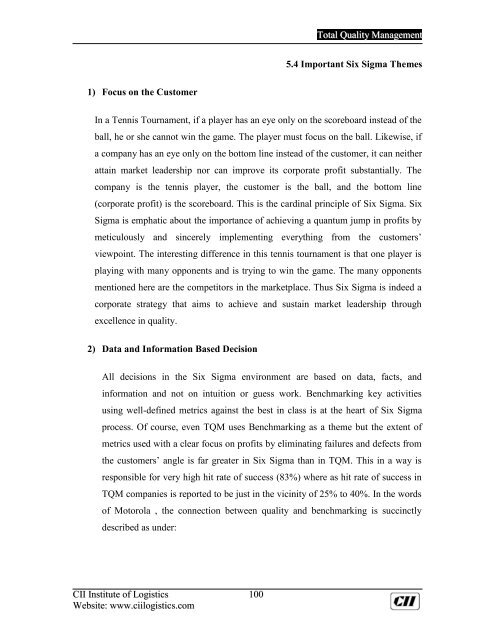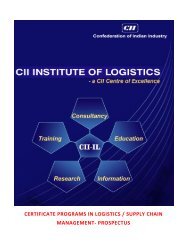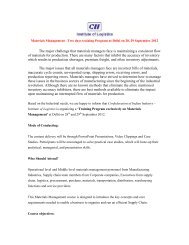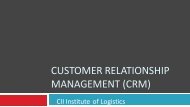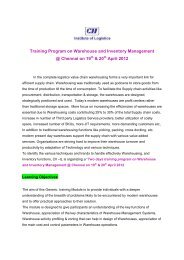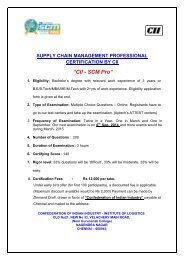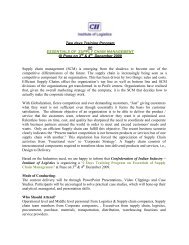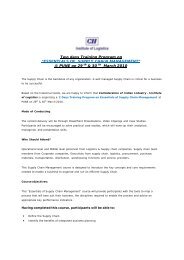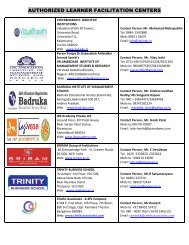Total Quality Management - CII Institute of Logistics
Total Quality Management - CII Institute of Logistics
Total Quality Management - CII Institute of Logistics
You also want an ePaper? Increase the reach of your titles
YUMPU automatically turns print PDFs into web optimized ePapers that Google loves.
<strong>Total</strong> <strong>Quality</strong> <strong>Management</strong><br />
5.4 Important Six Sigma Themes<br />
1) Focus on the Customer<br />
In a Tennis Tournament, if a player has an eye only on the scoreboard instead <strong>of</strong> the<br />
ball, he or she cannot win the game. The player must focus on the ball. Likewise, if<br />
a company has an eye only on the bottom line instead <strong>of</strong> the customer, it can neither<br />
attain market leadership nor can improve its corporate pr<strong>of</strong>it substantially. The<br />
company is the tennis player, the customer is the ball, and the bottom line<br />
(corporate pr<strong>of</strong>it) is the scoreboard. This is the cardinal principle <strong>of</strong> Six Sigma. Six<br />
Sigma is emphatic about the importance <strong>of</strong> achieving a quantum jump in pr<strong>of</strong>its by<br />
meticulously and sincerely implementing everything from the customers’<br />
viewpoint. The interesting difference in this tennis tournament is that one player is<br />
playing with many opponents and is trying to win the game. The many opponents<br />
mentioned here are the competitors in the marketplace. Thus Six Sigma is indeed a<br />
corporate strategy that aims to achieve and sustain market leadership through<br />
excellence in quality.<br />
2) Data and Information Based Decision<br />
All decisions in the Six Sigma environment are based on data, facts, and<br />
information and not on intuition or guess work. Benchmarking key activities<br />
using well-defined metrics against the best in class is at the heart <strong>of</strong> Six Sigma<br />
process. Of course, even TQM uses Benchmarking as a theme but the extent <strong>of</strong><br />
metrics used with a clear focus on pr<strong>of</strong>its by eliminating failures and defects from<br />
the customers’ angle is far greater in Six Sigma than in TQM. This in a way is<br />
responsible for very high hit rate <strong>of</strong> success (83%) where as hit rate <strong>of</strong> success in<br />
TQM companies is reported to be just in the vicinity <strong>of</strong> 25% to 40%. In the words<br />
<strong>of</strong> Motorola , the connection between quality and benchmarking is succinctly<br />
described as under:<br />
<strong>CII</strong> <strong>Institute</strong> <strong>of</strong> <strong>Logistics</strong> 100<br />
Website: www.ciilogistics.com


